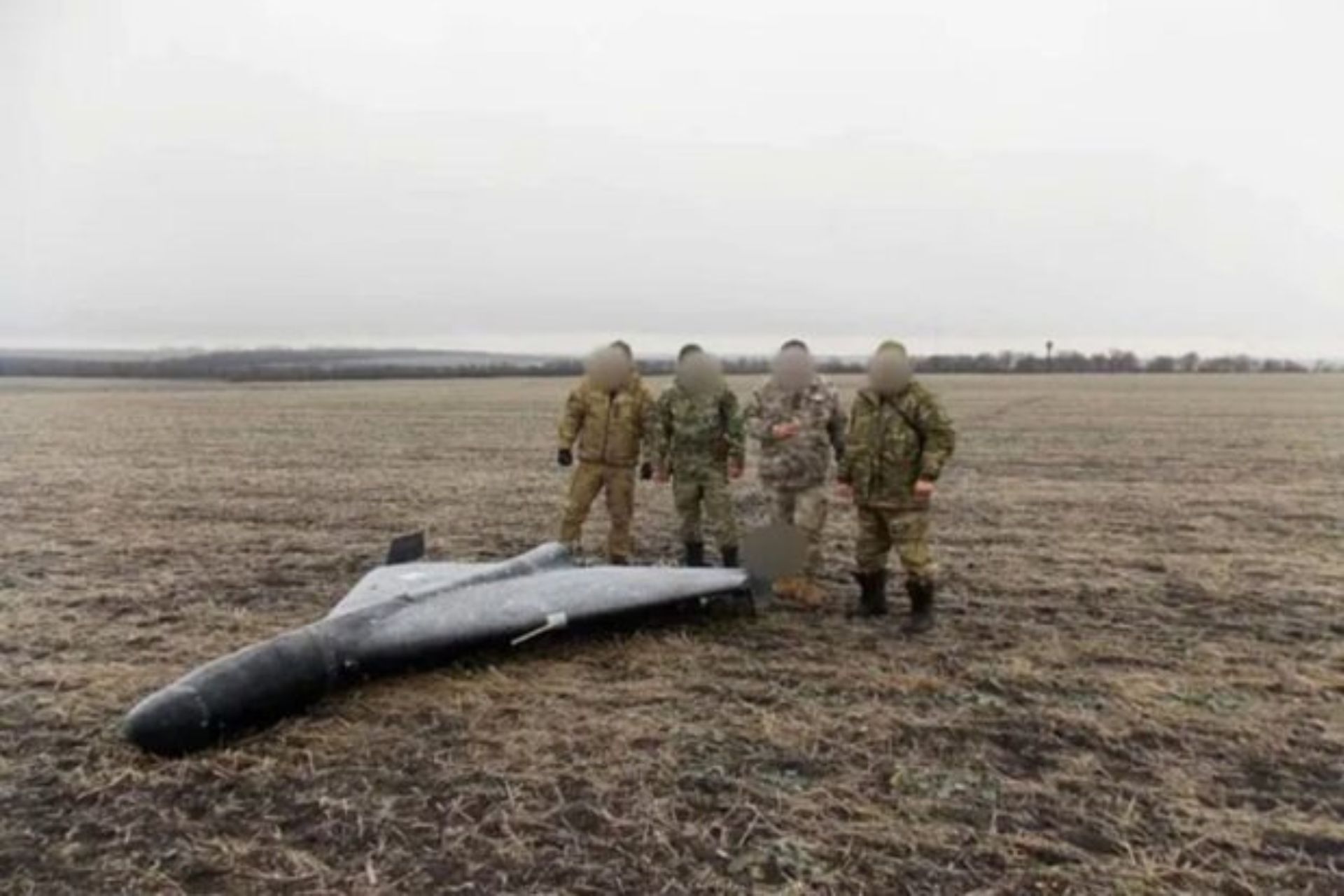Breaking News
Russia Produces Kamikaze Drone with Chinese Engine.
According to sources from a European intelligence agency and documents reviewed by Reuters, Russia began producing a new long-range attack drone, named Garpiya-A1, last year using Chinese engines and components. This drone has reportedly been deployed in the conflict in Ukraine. The intelligence, which includes a production contract for the new drone, internal company communications regarding the manufacturing process, and financial documents, indicates that IEMZ Kupol, a subsidiary of the Russian state-owned arms manufacturer Almaz-Antey, produced over 2,500 Garpiya drones between July 2023 and July 2024.
Follow Army Recognition on Google News at this link

The European agency stated that the Garpiya closely resembles the Iranian Shahed drone, while featuring distinctive characteristics, including a bolt-on fin and Limbach L-550 E engines (Picture source: Telegram Channel @ComAFUA)
The existence of this new Russian drone incorporating Chinese technology had not been previously reported. Neither IEMZ Kupol nor Almaz-Antey responded to requests for comment. The two intelligence sources confirmed that the Garpiya, meaning "Harpy" in Russian, has been used against military and civilian targets in Ukraine, causing damage to critical infrastructure and resulting in both civilian and military casualties. These sources provided images of the wreckage of a Garpiya, but Reuters was unable to independently verify these images.
The European agency stated that the Garpiya closely resembles the Iranian Shahed drone, while featuring distinctive characteristics, including a bolt-on fin and Limbach L-550 E engines. These engines, originally designed and manufactured by a German company, are now produced in China by Xiamen Limbach. The Chinese company did not respond to requests for comment.
Production documents reveal that the Garpiya prototype was launched in the first half of 2023. Production reached several hundred units in the second half of 2023 and doubled to around 2,000 units in the first half of 2024. Samuel Bendett, an adjunct senior fellow at the Center for a New American Security in Washington DC, stated that, if the existence of the Garpiya is confirmed, it would mark a shift in Russia's reliance on Iranian-designed drones for long-range attacks. According to him, this could indicate that Russia can now rely more on domestic developments and Chinese components, as both sides involved in the conflict depend heavily on Chinese parts for drone production.
Iran, which has supplied more than a thousand Shahed kamikaze drones to Russia since the invasion began in February 2022, has repeatedly denied sending drones to Moscow for use in Ukraine. These drones have been used to exhaust Ukrainian air defenses and strike infrastructure far from the front lines.
A production contract worth more than 1 billion rubles (approximately 10 million euros) was signed in the first quarter of 2023 between the Russian Ministry of Defense and Kupol for the establishment of a drone manufacturing facility. According to intelligence sources, production takes place in a former cement factory in Izhevsk, Udmurt Republic, western Russia, acquired by Kupol in 2020. Reuters was able to identify the site through a video posted on the Telegram messaging app, showing the internal architecture of the building matching archived images of the factory in Izhevsk. The location was verified by comparing surrounding buildings, roads, and visible vegetation in street and satellite views.
A third document reviewed by Reuters details a delivery status update dated in the first quarter of 2024 between intermediary TSK Vektor and manufacturer Kupol. This agreement mentions an order for 100 axles, carburetors, and other parts for Limbach engines supplied by two other Chinese companies: Juhang Aviation Technology and Redlepus Vector Industries, both based in Shenzhen. These companies did not respond to requests for comment.
Customs data obtained from a commercial supplier show that, from April 2022 to December 2023, TSK Vektor imported goods worth $36.3 million from Juhang Aviation Technology and $6.2 million from Redlepus TSK Vector Industrial Shenzhen Co Ltd. These goods included aircraft engines, transistors, electronic modules, connectors, plugs, sockets, spare parts, and components, most of which were labeled as "for general civil purpose" or "for general industrial purpose."
The use of Chinese components in these drones has raised concerns. The European intelligence agency stressed the need to halt the export of these essential components to Russia. China, for its part, reaffirmed its commitment to strictly control the export of items with potential military applications, including drones. It also noted that there are no international restrictions on its trade with Russia. In response to NATO's calls to end support for Russia, Beijing declared it remains committed to promoting peace talks and seeking a political resolution to the Ukrainian crisis.
The United States has repeatedly warned China against supporting Russia's defense industry and has imposed hundreds of sanctions aimed at curbing Moscow's ability to exploit certain technologies for military purposes. However, China has deemed these sanctions "illegal and unilateral." Neither the Russian Ministry of Defense nor the Chinese Ministry of Foreign Affairs responded to requests for comment.
The production of the Garpiya drone, which has a take-off weight of less than 300 kilograms and a maximum range of 1,500 kilometers, appears to be a significant step in Russia's military efforts. This drone is similar to the Iranian Shahed-136, which has been extensively used by Moscow in Ukraine.


























